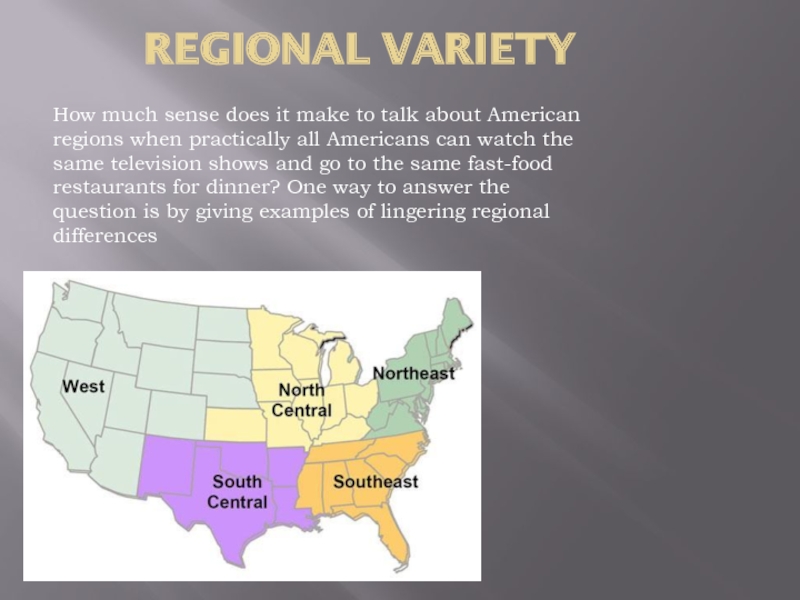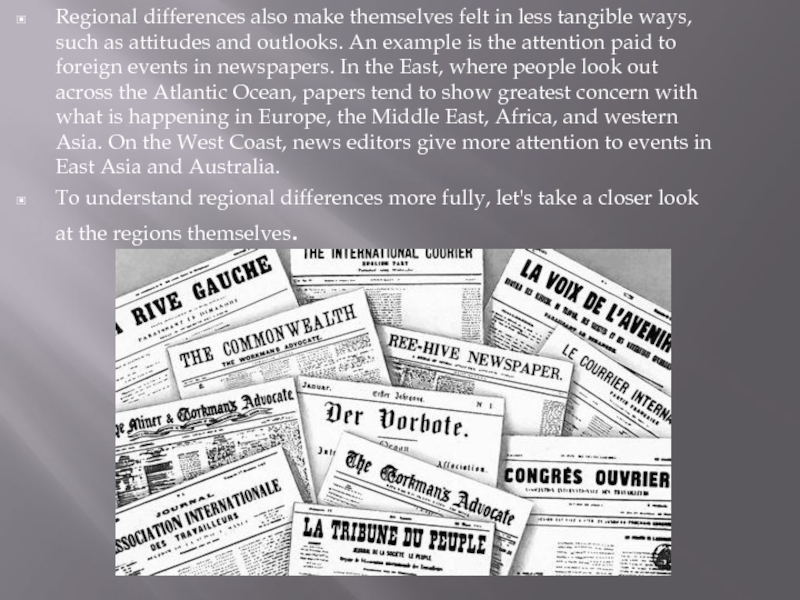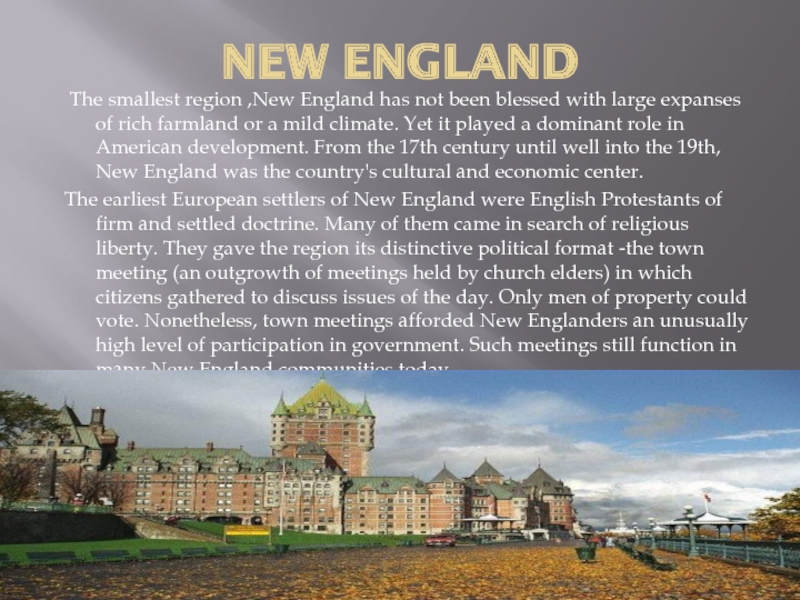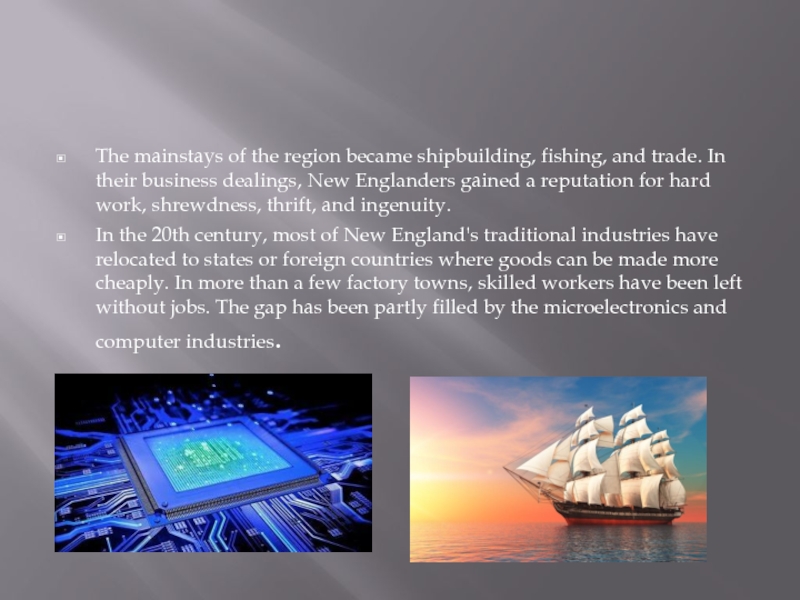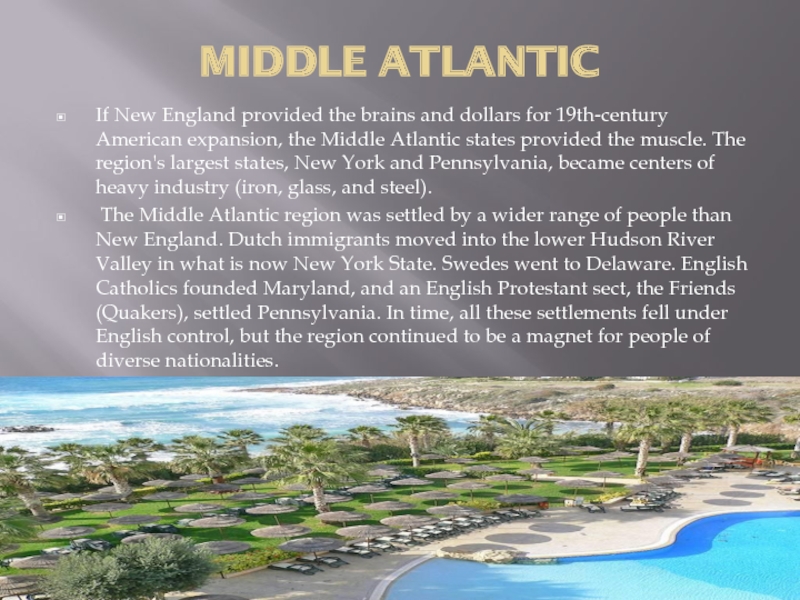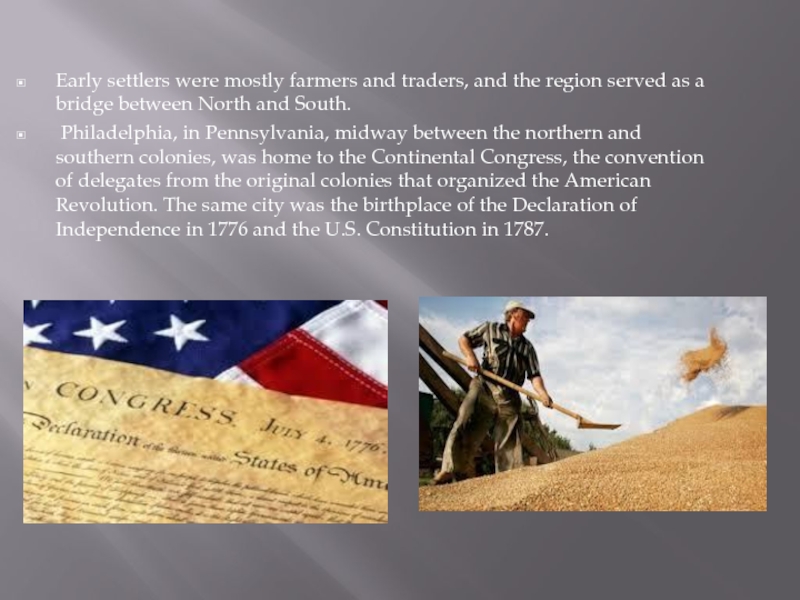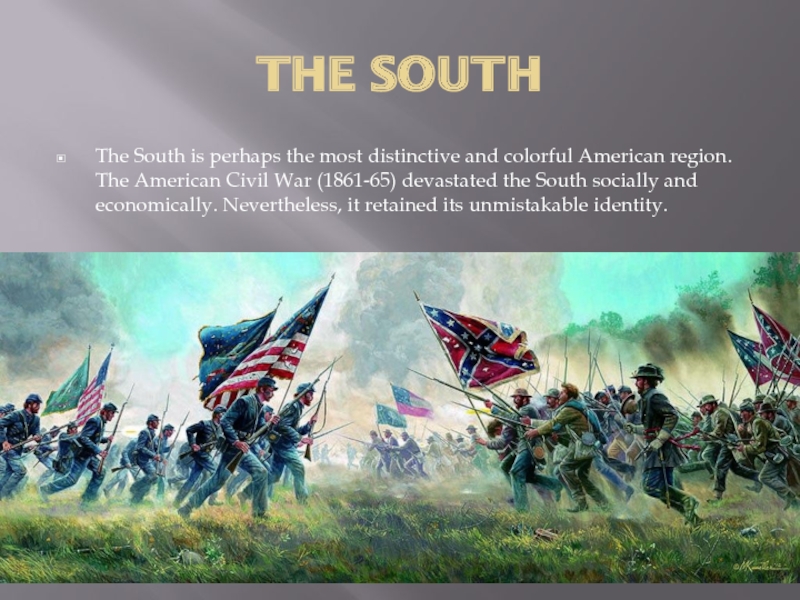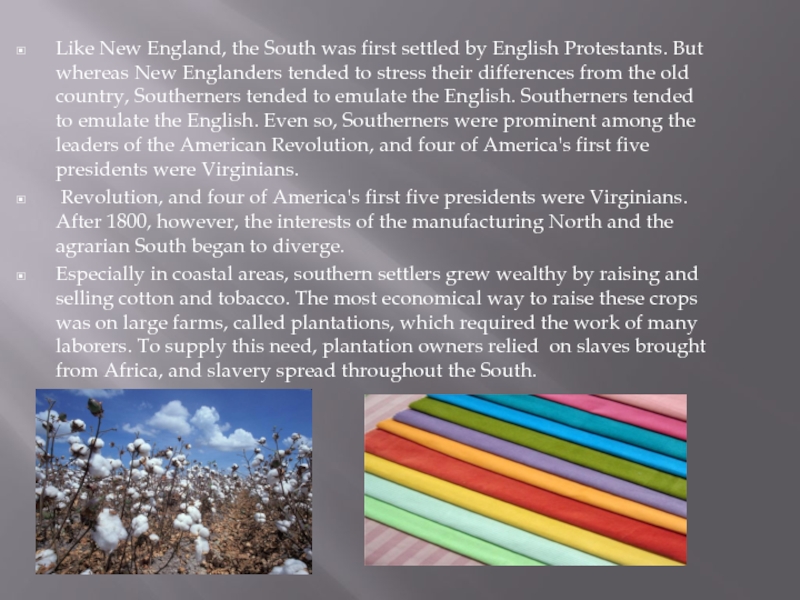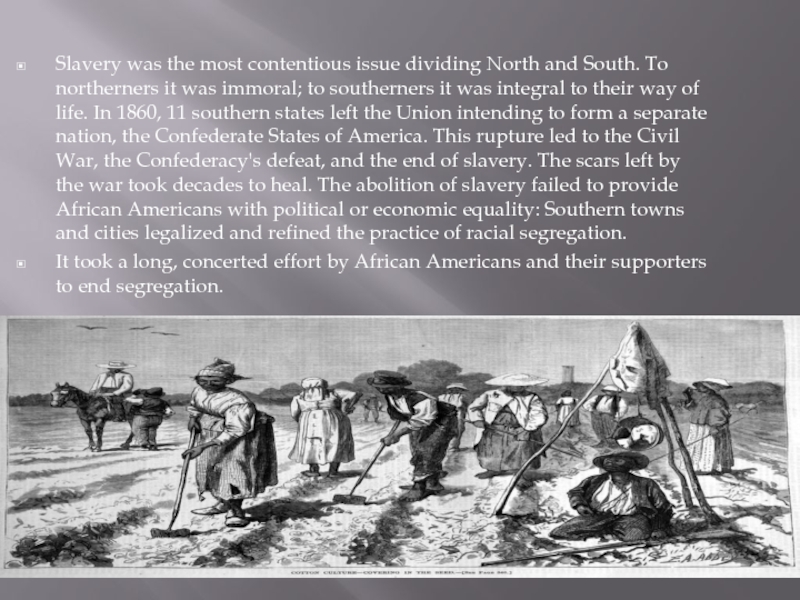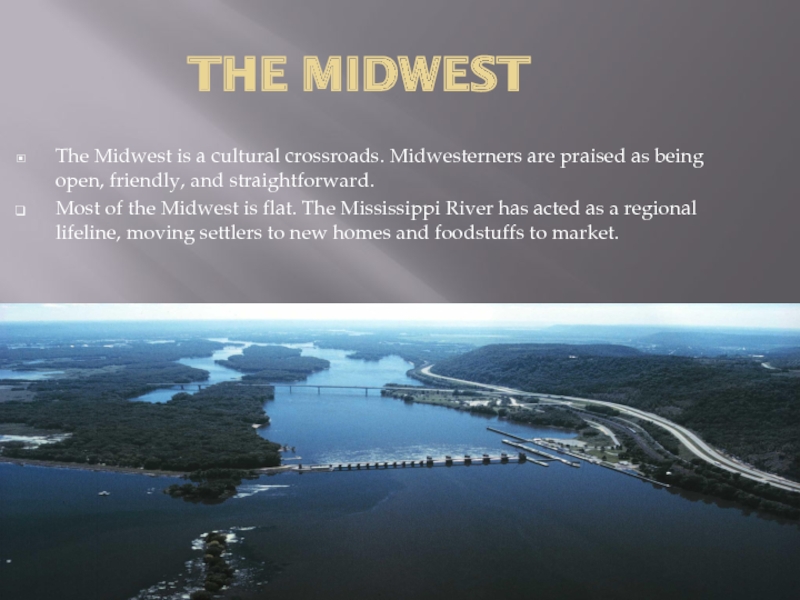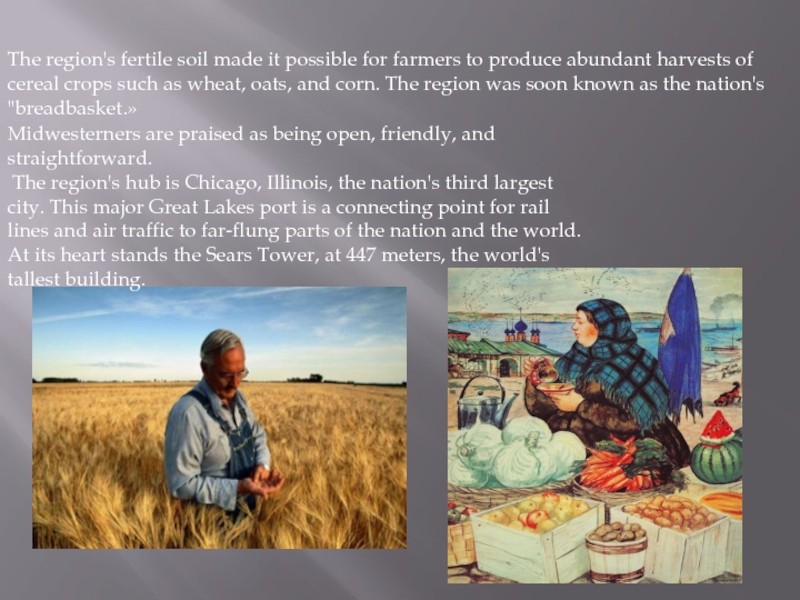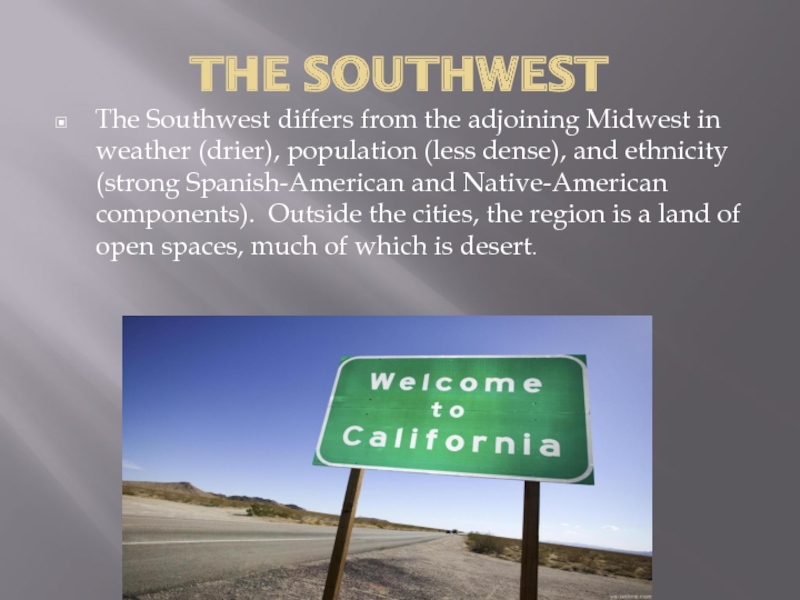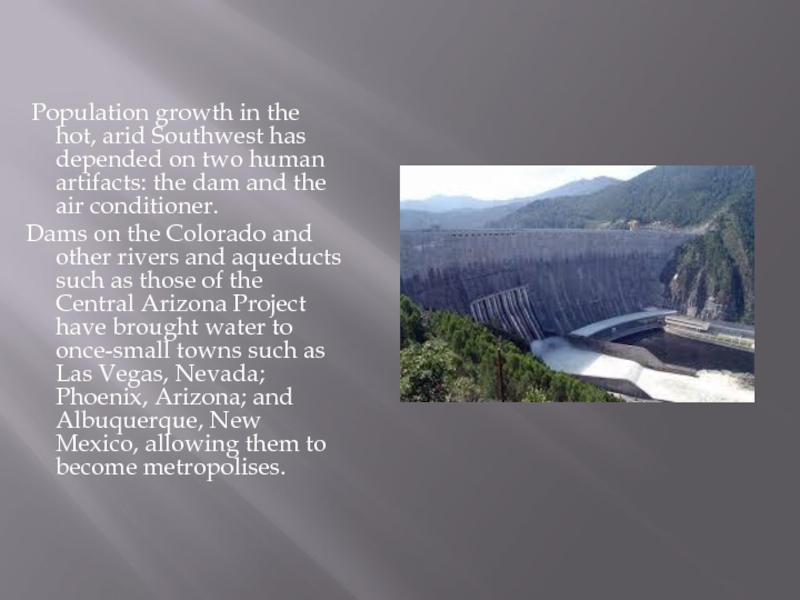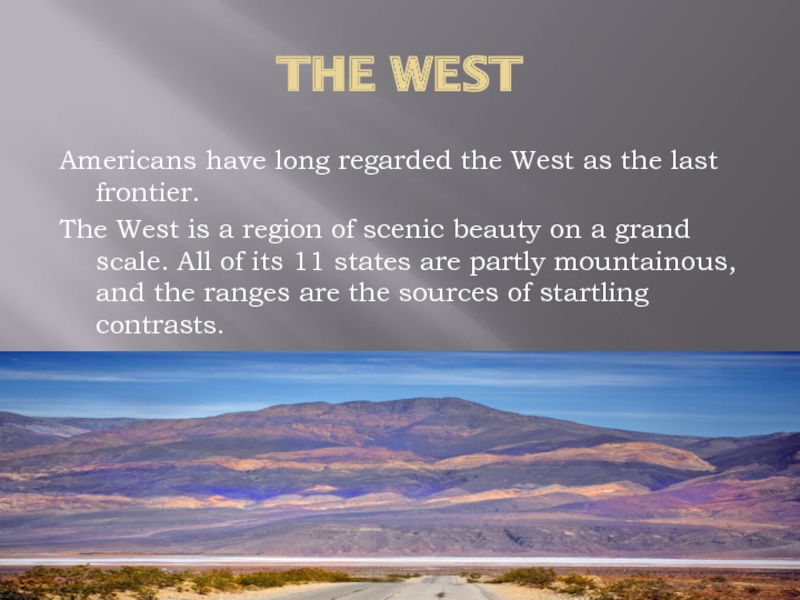- Главная
- Разное
- Дизайн
- Бизнес и предпринимательство
- Аналитика
- Образование
- Развлечения
- Красота и здоровье
- Финансы
- Государство
- Путешествия
- Спорт
- Недвижимость
- Армия
- Графика
- Культурология
- Еда и кулинария
- Лингвистика
- Английский язык
- Астрономия
- Алгебра
- Биология
- География
- Детские презентации
- Информатика
- История
- Литература
- Маркетинг
- Математика
- Медицина
- Менеджмент
- Музыка
- МХК
- Немецкий язык
- ОБЖ
- Обществознание
- Окружающий мир
- Педагогика
- Русский язык
- Технология
- Физика
- Философия
- Химия
- Шаблоны, картинки для презентаций
- Экология
- Экономика
- Юриспруденция
Regional variety презентация
Содержание
- 1. Regional variety
- 2. REGIONAL VARIETY How
- 3. Consider the food Americans eat. Most
- 4. While American English is generally standard, American speech often
- 5. Regional differences also make themselves felt in
- 6. NEW ENGLAND The smallest region ,New
- 7. The mainstays of the region became
- 8. MIDDLE ATLANTIC If New England provided
- 9. Early settlers were mostly farmers and traders,
- 10. As heavy industry spread throughout the region,
- 11. THE SOUTH The South is perhaps the
- 12. Like New England, the South was first
- 13. Slavery was the most contentious issue dividing
- 14. THE MIDWEST The Midwest is a cultural
- 15. The region's fertile soil made it
- 16. THE SOUTHWEST The Southwest differs from the
- 17. Population growth in the
- 18. THE WEST Americans have long regarded the
- 19. Western cities are known for their tolerance.
- 20. Thank you for your attention!
Слайд 2REGIONAL VARIETY
How much sense does it make to talk about
Слайд 3
Consider the food Americans eat. Most of it is standard wherever
Generally, the quality of fresh fruits and vegetables does not vary much from one state to the next. On the other hand, it would be unusual to be served hush puppies (a kind of fried dough) or grits (boiled and ground corn prepared in a variety of ways) in Massachusetts or Illinois, but normal to get them in Georgia. Other regions have similar favorites that are hard to find elsewhere.
Слайд 4While American English is generally standard, American speech often differs according to what
Слайд 5Regional differences also make themselves felt in less tangible ways, such
To understand regional differences more fully, let's take a closer look at the regions themselves.
Слайд 6NEW ENGLAND
The smallest region ,New England has not been blessed
The earliest European settlers of New England were English Protestants of firm and settled doctrine. Many of them came in search of religious liberty. They gave the region its distinctive political format -the town meeting (an outgrowth of meetings held by church elders) in which citizens gathered to discuss issues of the day. Only men of property could vote. Nonetheless, town meetings afforded New Englanders an unusually high level of participation in government. Such meetings still function in many New England communities today.
Слайд 7
The mainstays of the region became shipbuilding, fishing, and trade. In
In the 20th century, most of New England's traditional industries have relocated to states or foreign countries where goods can be made more cheaply. In more than a few factory towns, skilled workers have been left without jobs. The gap has been partly filled by the microelectronics and computer industries.
Слайд 8MIDDLE ATLANTIC
If New England provided the brains and dollars for 19th-century
The Middle Atlantic region was settled by a wider range of people than New England. Dutch immigrants moved into the lower Hudson River Valley in what is now New York State. Swedes went to Delaware. English Catholics founded Maryland, and an English Protestant sect, the Friends (Quakers), settled Pennsylvania. In time, all these settlements fell under English control, but the region continued to be a magnet for people of diverse nationalities.
Слайд 9Early settlers were mostly farmers and traders, and the region served
Philadelphia, in Pennsylvania, midway between the northern and southern colonies, was home to the Continental Congress, the convention of delegates from the original colonies that organized the American Revolution. The same city was the birthplace of the Declaration of Independence in 1776 and the U.S. Constitution in 1787.
Слайд 10As heavy industry spread throughout the region, rivers such as the
Like New England, the Middle Atlantic region has seen much of its heavy industry relocate elsewhere. Other industries, such as drug manufacturing and communications, have taken up the slack.
Слайд 11THE SOUTH
The South is perhaps the most distinctive and colorful American
Слайд 12Like New England, the South was first settled by English Protestants.
Revolution, and four of America's first five presidents were Virginians. After 1800, however, the interests of the manufacturing North and the agrarian South began to diverge.
Especially in coastal areas, southern settlers grew wealthy by raising and selling cotton and tobacco. The most economical way to raise these crops was on large farms, called plantations, which required the work of many laborers. To supply this need, plantation owners relied on slaves brought from Africa, and slavery spread throughout the South.
Слайд 13Slavery was the most contentious issue dividing North and South. To
It took a long, concerted effort by African Americans and their supporters to end segregation.
Слайд 14THE MIDWEST
The Midwest is a cultural crossroads. Midwesterners are praised as
Most of the Midwest is flat. The Mississippi River has acted as a regional lifeline, moving settlers to new homes and foodstuffs to market.
Слайд 15
The region's fertile soil made it possible for farmers to produce
Midwesterners are praised as being open, friendly, and straightforward.
The region's hub is Chicago, Illinois, the nation's third largest city. This major Great Lakes port is a connecting point for rail lines and air traffic to far-flung parts of the nation and the world. At its heart stands the Sears Tower, at 447 meters, the world's tallest building.
Слайд 16THE SOUTHWEST
The Southwest differs from the adjoining Midwest in weather (drier),
Слайд 17
Population growth in the hot, arid Southwest has depended on
Dams on the Colorado and other rivers and aqueducts such as those of the Central Arizona Project have brought water to once-small towns such as Las Vegas, Nevada; Phoenix, Arizona; and Albuquerque, New Mexico, allowing them to become metropolises.

